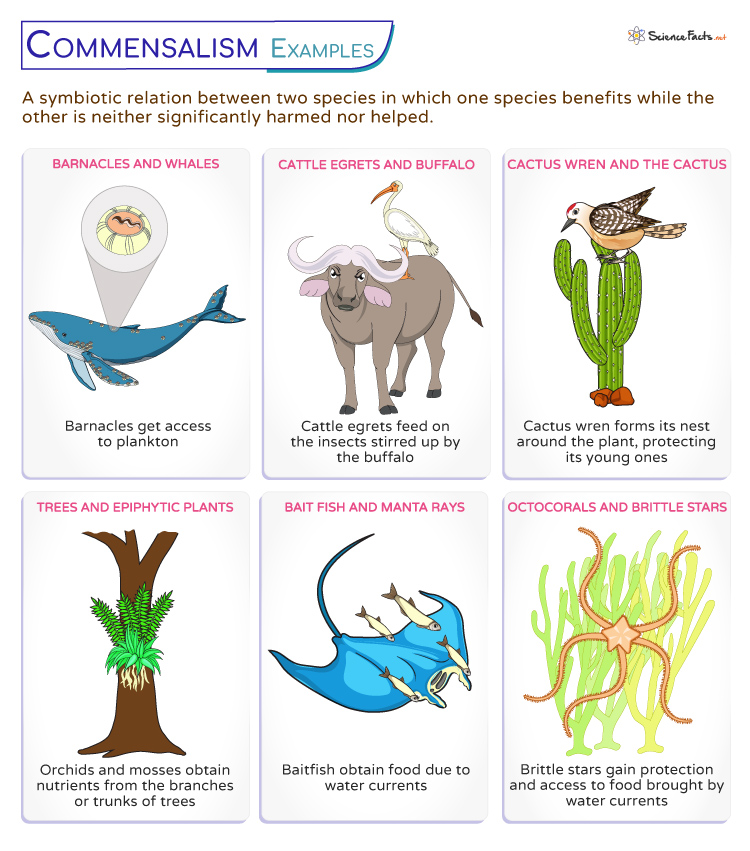Unlike parasitism, where one organism benefits at the expense of the other, and mutualism, where both organisms benefit, commensalism involves an unequal partnership. The organism benefiting is the commensal, while the other organism is the host. The term ‘commensalism’ was coined by Pierre-Joseph van Beneden in 1876, obtained from the Latin word ‘commensalis,’ which means ‘sharing a table.’
Types of Commensalism
Examples of Commensalism in Nature
How Mutualism and Parasitism Differ from Commensalism
Brittle stars gain protection and access to food particles brought by water currents
Some common examples of commensalism in nature are:
Barnacles and Whales
Barnacles are marine organisms that attach to the skin of whales. They benefit from the whale’s movement through water, which provides them access to plankton-rich areas. The whale, in turn, remains unaffected by the barnacles’ presence.
Cattle Egrets and Grazing Animals
Cattle egrets are birds that follow large grazing animals like cows or buffalo. As the animals move through the grass, they disturb insects, which the egrets feed on. The animals are undisturbed by the birds’ presence.
Trees and Epiphytic Plants
Epiphytic plants, such as orchids and mosses, often develop on the branches or trunks of trees. These plants obtain nutrients from rainwater and debris without harming the host tree. The host tree is not significantly affected by the presence of these epiphytes.
Cactus Wren and the Cactus
In the desert, the cactus wren benefits from the cactus by forming its nest around the plant, thus protecting its baby. The cactus is not affected or damaged by the relation.
Pseudoscorpions and Other Insects
Pseudoscorpions are tiny arachnids that often hitch a ride on larger insects, such as flies or beetles. These pseudoscorpions gain transportation to new feeding grounds and potential prey, while the bigger insects are unaffected by their presence.
Bait Fish and Manta Rays
Small fishes and even plankton often gather around the large bodies of manta rays. As the manta rays swim, they stir up water and create currents that bring food closer to the surface. Thus, due to the manta rays’ movements, the bait fish feed on plankton attracted by the water currents.
Octocorals and Brittle Stars
Octocorals, also known as soft corals, provide a habitat for brittle stars. These small, mobile echinoderms attach themselves to the branches of the octocorals. While the brittle stars gain protection and access to food particles brought by water currents, their presence does not significantly affect the octocorals. All the above examples show commensalism in other animals except humans. In humans, the microbiota of our skin and the gastrointestinal tract are in a commensal relationship.
